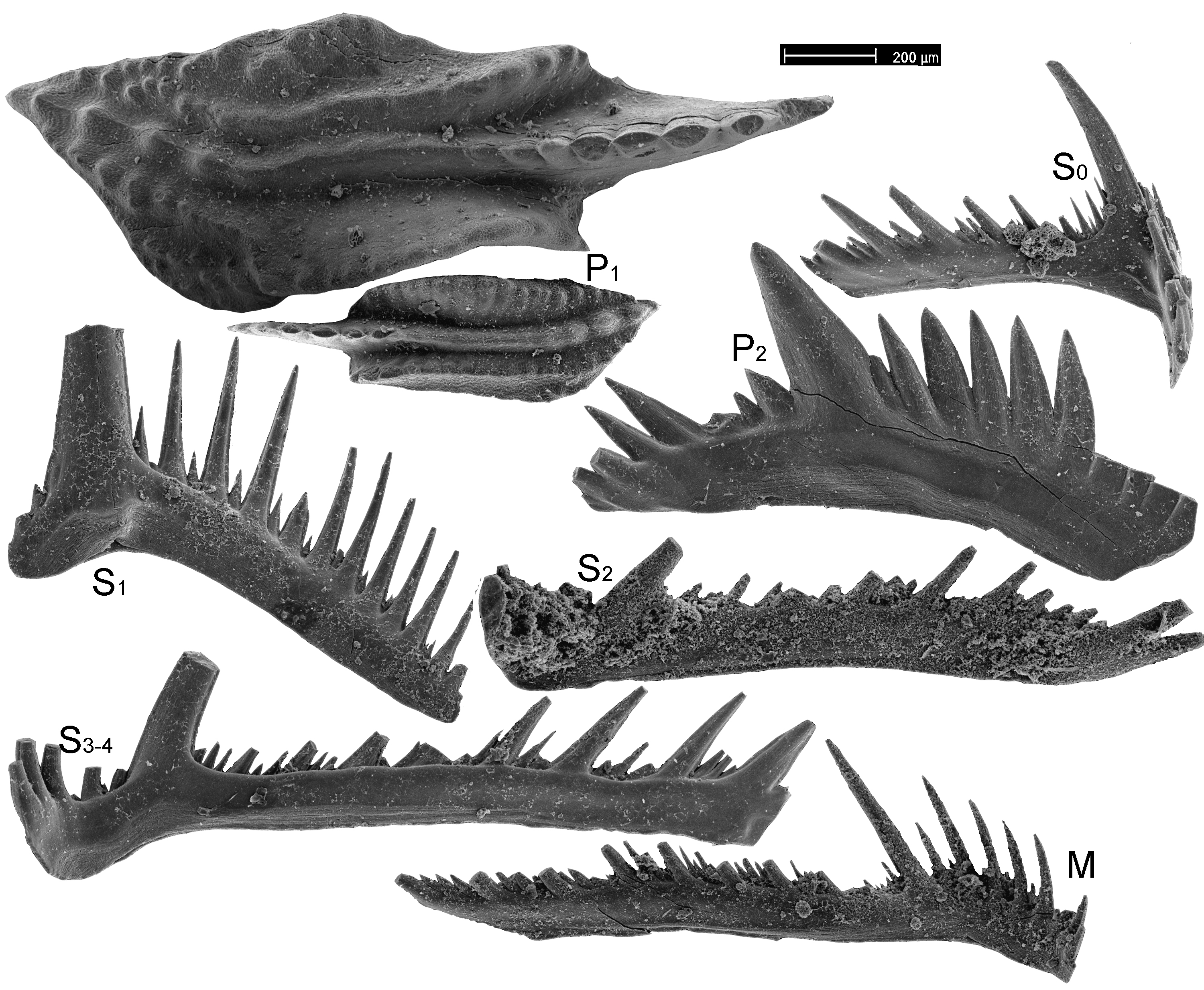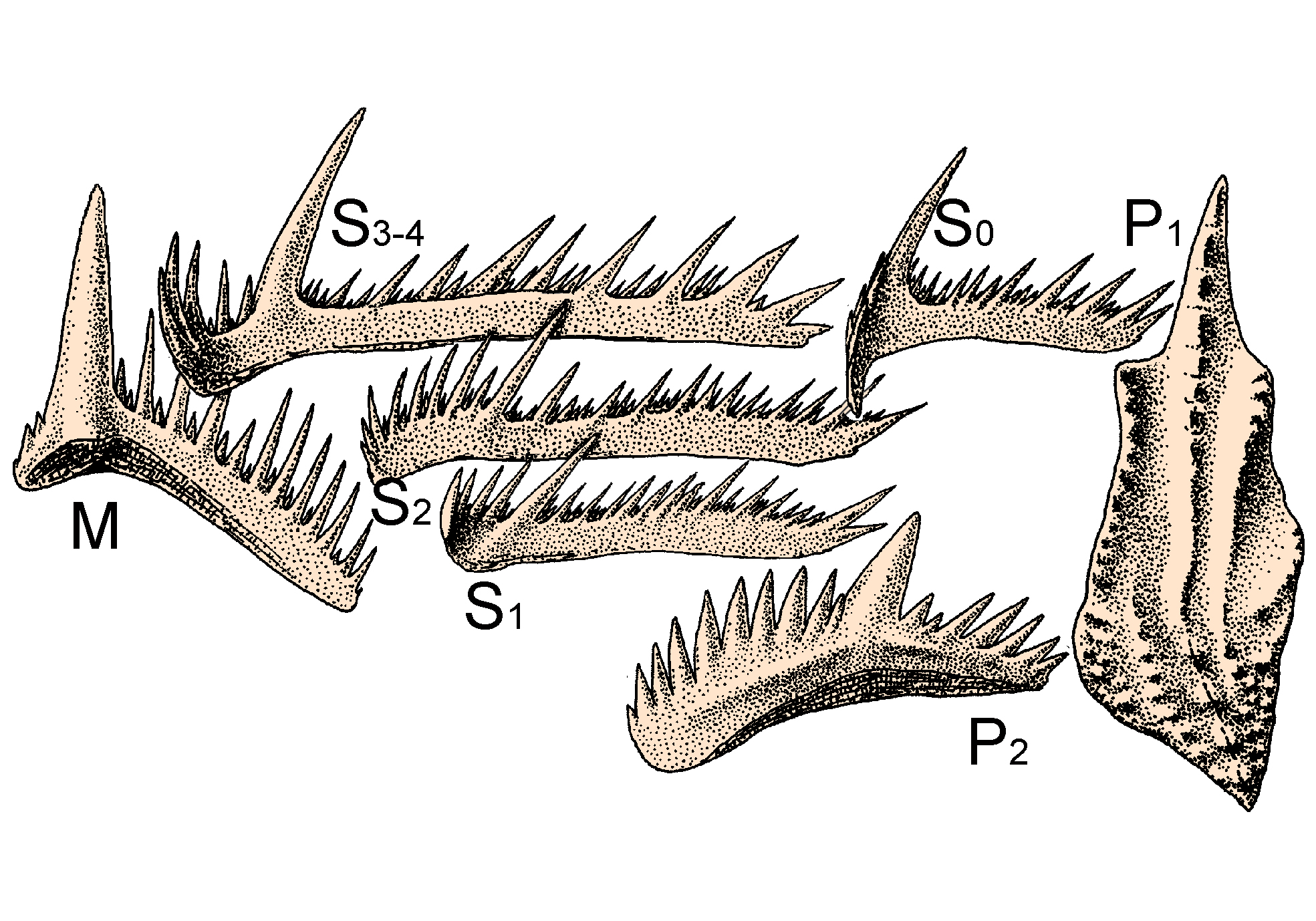Diagnoza
Mature P2 elements with incipient platform and straight processes, P1 elements with the posterior tongue of the platform developed only in mature specimens. Porównanie
The species actually does not show the wide platform in P2 elements diagnostic for the genus but is also different from Polynodosus in not developing a peniculus (or at least the undulation of the process connected with it is not recognizable in larger specimens). Ramiform elements of the apparatus may be indistinguishable from those of associated platform–bearing Mehlina. The holotype of the species is a juvenile P1 element associated in the same sample (locality 14 of Thomas 1949) with apparently conspecific mature elements named Palmatolepis? irregularis and Ancyrognathus irregularis, robust P2 elements named Bryantodus? sp., and low-arched robust M elements named Euprioniodina iowaensis and E. lateralis. Co-occurring Branmehla inornata, Polygnathus semicostatus, Palmatolepis perlobata, and Conditolepis falcata are suggestive of the P. trachytera Zone (unless this is a case of reworked material). Thomas (1949) illustrated also a P2 element of advanced Hemilistrona from the same locality, but in Chauff and Dombrowski (1977) it is referred to as coming from another locality near Kalona. It is thus assumed here that also the early populations of the lineage from the C. marginifera Zone (velifer Zone) belong to this chronospecies. Autekologia Występowanie geograficzne
Miedzianka, Kowala, Jabłonna, Ostrówka, and Gołogłowy. Zasięg czasowy
C. marginifera to L. styriacus Zones. Materiały muzealne
ZPAL: 787 specimens. Literatura
Dzik, J. 2006. The Famennian "Golden Age" of conodonts and ammonoids in the Polish part of the Variscan sea. Palaeontologia Polonica 63, 1-359. | 

